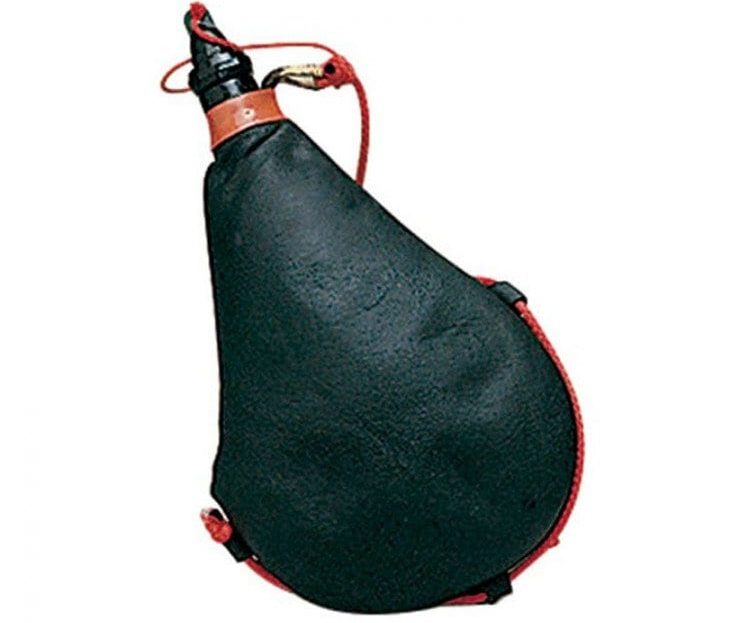El wine skin It has fallen into disuse, although you may not even know what it is. However, it still exists and is marketed. Here we give you the keys so that you understand well where does it come from y How is this made. Does a container that has been employed for a long time have a future? millennia? Let's find out!
What is a wine skin?
Do you know what a odre? You will surely know him as boot o wine skin. It is also likely to remind you of Don Quixote and The odyssey. They are so old that they not only existed in the time when Homer narrated the vicissitudes of Ulises. They also had a presence in the old Egypt and they even appear in the Gospel of Saint Mark. How can you stand out as a means of preserving wine so that it will last for millennia? Let's go by parts.
The first thing we should know is that, as its name suggests, it is about leather. In fact, their wrinkles give rise to the saying: "The older, the more skin". It is usually goat due to its powerful resistance. That is why the drums are also made with this material. However, the leather used is sometimes made of sheep or even from ox. That of the latter animal is reserved for the largest. Therefore, the manufacturer must choose carefully which leather to tan before sewing it hermetically.

Not all are the same size, since they are not given the same use to all. That is why the employee on a sea voyage was not the same as that of a farmer. On the other hand, they are vessels so resistant and that they conserve so well that they were not only dedicated to wine. Many peoples have used it since ancient times. To save milk, honey, wine, oil, water y cereals. Even for him mercury from the Almadén mines in Ciudad Real!
How does it preserve so well?
The conditions of conservation of the wine skin they come largely from their manufacture. For this the first of all is the skinning of the animal. It is essential to do it correctly by closed method and open. With the first form the animal is hung upside down and the skin is pulled from the neck upwards using the knife as little as possible. All the skin should come out at once. However, open extraction is more common. With this a cut is made from top to bottom until the skin is stretched out on the table.
The next is scrape it off to remove the remains of meat. After that, tan with the flour extracted from the bark of different trees. Thus the craftsmen prevent rotting and leave the pores more spongy. Inside, it is smeared with fish or olive oils to give it greater durability. Later comes a key element: la fish. It is the resin of trees such as holm oak and juniper that is applied indoors after heating it to high temperatures. This makes the waterproof boot back. The last step consists of sew it using threads or braids. An opening is left for Fill and one for drink.

Nowadays
It must be recognized that they are no longer used as they used to be. The appearance of new packaging such as bottles glass led to the gradual decline of the wineskin. However, there are still businesses dedicated to its manufacture. For example, Tradition wineries de Jerez he uses fifteen hundred boots to store his wines. There are also companies that sell them to the general public such as Jesus Blasco. In fact the hides are a souvenir recurring in the famous service stations de Castilla la Mancha.
Un marketing the right one could give the wine skin like to make it popular. As we already said in the article about wine gummies, today's consumers are not just looking for wine. They are also looking for experiences and this container could take them into the world of tradition. They can also be made with latex to dispense with the death of an animal and win over the vegan public. It is not the same as the traditional boot but it could help preserve this exciting packaging with so many years of history behind it.






